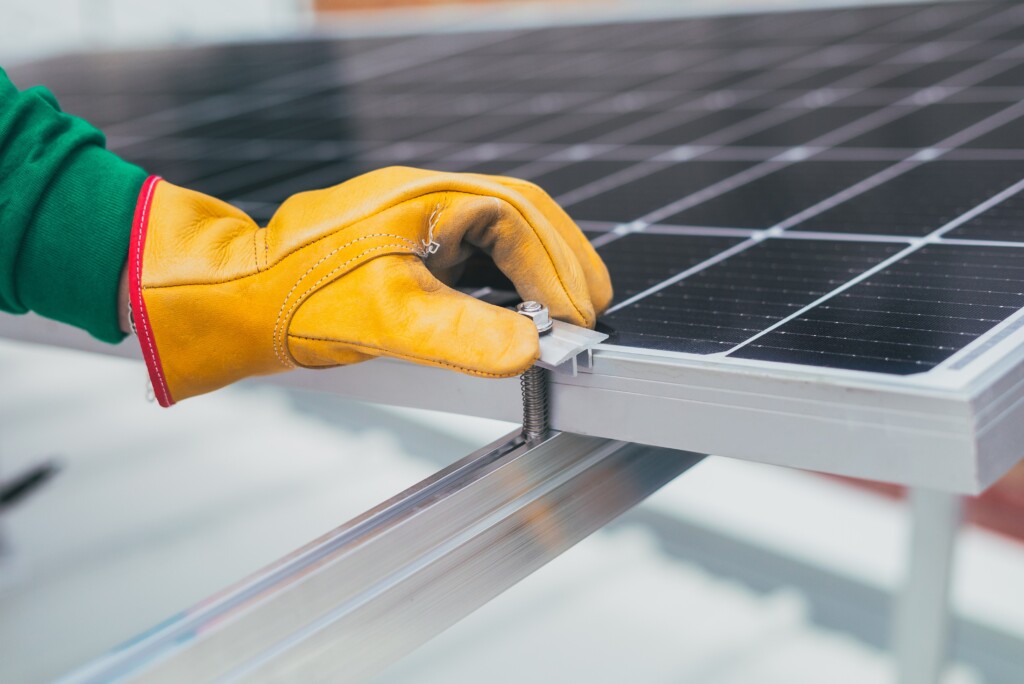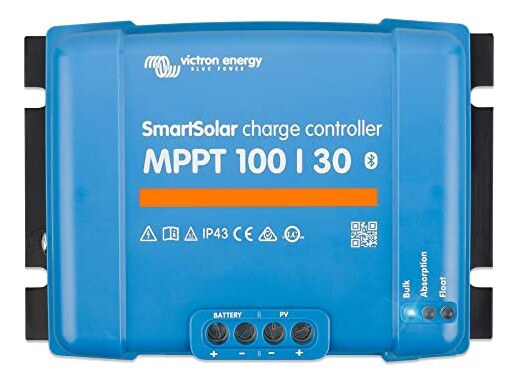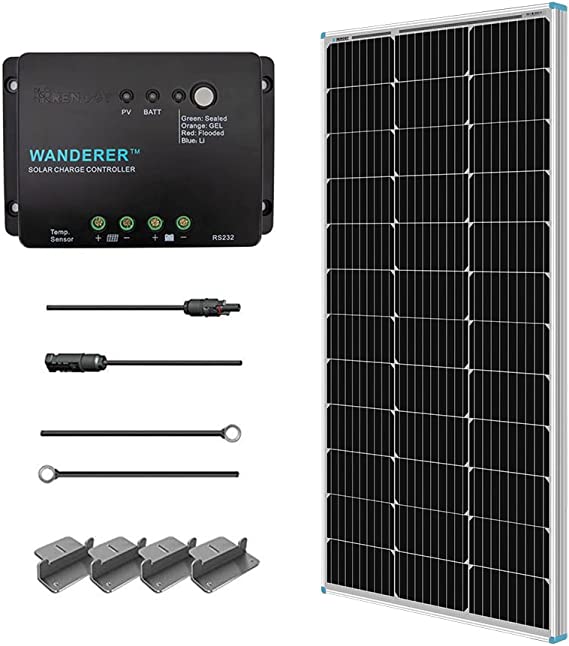The key ingredient of any off-grid lifestyle is solar panels. Regardless of whether you are going away for a weekend or a lifetime, the ability to go off-grid allows your Buslife to be much more adventurous and exciting. Being able to charge your devices, run a fridge, and have light wherever you go as long as the sun is shining gives you invaluable freedom and independence while on the road.
While solar panels seem like an ideal solution, in theory, many hold back on installing them. Quite frankly, electrical systems are intimidating to the untrained eye. However, with the right guidance and information, setting up your bus with solar can be quite easy and this guide is here to help you. We’ll be taking a deeper dive into what type of solar panels to buy, how they operate, and how to install them. We also offer our expertise on how to find a solar panel kit that is right for you.
What are solar panels, exactly?
When setting up a solar system, the first thing needed is the solar panel itself. But what are they and how do they work? Simply put, a solar panel is an ingenious roof panel that absorbs the sun’s rays and converts them into usable, clean electricity. Without getting too scientific, the rays are composed of energy particles called “photons”. Solar panels take these photons and process them into DC power. This power is then stored in large batteries (which we talk more bout later) until it is ready to be used as electricity. There are two types of panels, polycrystalline and monocrystalline. The main differences between them are efficiency and cost.
| Polycrystalline | Polycrystalline cells (panels) are more affordable but less efficient. They are made up of several silicon crystals which can help bring down the price. In turn, a polycrystalline panel will not be as good at producing electricity, especially in places with reduced sunlight. |
| Monocrystalline | Monocrystalline on the other hand is going to be the most suitable for our application, as the real state is extremely limited. Yes, the initial cost will be higher, but it gives you the most “bang for your buck”. After all, a bus, regardless of the series, only has so much tom up top. |



Choosing the Right Solar Panels For You
Calculating your solar capacity needs
Solar panels are performance-based devices measured by their wattage. While panels with lower wattage will transfer solar energy into electrical power at a slower rate, panels with higher wattage will transfer solar energy into electrical power at a quicker rate. This allows for a higher concentration of stored energy per second. The wattage of a single solar panel suitable for vehicle mounting typically ranges from 10W to 350W, the prices of which increase accordingly.
Choosing the wattage that is right for you is tricky because it can be hard to predict how much electricity you will need/use while on the road. However, by deciding what electrical appliances you will be using in your bus and estimating how often you use them, it is actually possible to calculate how much electricity you need to generate in order to live comfortably in your bus. This electrical guide and calculator by savvy vanlifers Far Out Ride will be a great help!
Mounted solar panels
Mounted solar panels are the most commonly used solution for generating electricity in vehicles. Once they are mounted and connected to your batteries, your job is done and the rest is down to the sun. As long as you are parked under direct sunlight, your panels will generate more than enough electricity to fit your needs. While you can buy singular mounted solar panels, they are useless without the ‘kit’ they require to do their job. We recommend buying solar panel kits so that you have every item needed to mount and connect your panels to your batteries including plastic or metal mounts, cables, and a charge controller (more about those below).
Flexible Solar Panels
Flexible panels are not fixed and so the user can move their location and angle on and around the bus in order to get optimize the sun absorption rate. When the panels are not being used, they can be folded and stored inside the bus. A positive aspect of movable solar panels is that they allow you to park your bus out of direct sunlight to keep it cool. On the downside, the use of flexible panels is reliant upon there being an appropriate space to place them on or around your bus which isn’t always possible. Plus, they may take up precious storage space inside your bus.
Choosing your charge controller
Now that you are familiar with solar panels, it is time to talk about charge controllers. As the brain of the operation, they have an important role. A controller will take the incoming current from the solar panel to safely store it in the batteries. Similar to solar panels, there are two main types of controllers that Buslifers prefer.
| PWM (pulse width modulator) | PWM, or a pulse width modulator works as an electrical switch by regulating the voltage of the solar panels, decreasing as the batteries charge. While the PWM controller is a fine choice for a solar setup, it is seen as a less efficient technology. When efficiency is the name of the game, we recommend choosing the latter. |
| MPPT (Maximum Power Point Tracking) | MPPT, a.ka. Maximum Power Point Tracking is the ultimate choice of the two. It utilizes the solar panels to their top potential, making them ideal for full-timers who have higher electricity demands. Companies like Victron and EPever have become industry leaders in MPPT charge controllers and allow users to make the most from their tiny living space. |
Solar panel wiring and installation
If you decide to install a solar system in your bus, special attention must be paid to the wiring. After all, this step is crucial to the safety and endurance of your solar power setup.
Specific solar panel wiring is needed to run power from the panels into the controller and often, this is supplied in your solar panel kit. After that, automotive wiring can be used for accessories, plugs, lighting, and other electrical devices. To ensure your electrical system will function correctly, you must choose the right wire gauge or thickness. Choose wires that are too thin and they will cause all kinds of problems from dysfunctional electricity to fires. If you are unsure of the gauge you need, it’s better to be safe than sorry with a larger wire.
Whether you have basic knowledge of electrics or you’re a complete novice, solar panel systems are designed to be easy to install. As well as the instruction manuals that come with solar panels, you can find plenty of useful installation information on YouTube.
Remember, a lot of the techniques that go into building a home will apply to your VW Bus. If You must make sure that every circuit has a fuse in case of emergency. It is like having good insurance, you don’t know when it’ll come in handy, but when you need it, you’ll be glad it’s there. To keep things neat, tidy, and safe, the wiring should be done before the walls go up. Make sure everything all connections and splices are securely soldered and heat shrunk to avoid problems or “surprises” down the road.
Do I need an inverter as well as solar panels?
While household appliances will work on 240V (AC), automotive electrical systems like the one in your VW Bus work on 12V (DC). Since there are many household appliances like laptops and coffee makers we may want to use in our van that cannot run off a 12V current, it is very useful to generate a 240V current in your bus too. So how do we take 12V power and convert it to usable household 240V electricity to run critical appliances? The answer is simple. Via a 12/240V inverter. It takes 12V DC power from the battery bank and converts it to conventional AC electricity.
In today’s market, there are two types of inverters to look out for. Modified and pure sine wave. A pure sine wave is generally thought to be the best option as it can handle any delicate electronic equipment. A modified sine wave inverter, on the other hand, will work with traditional gear such as water pumps and phone chargers without a problem but may cause issues for complex electrical equipment such as medical devices.
Choosing the right storage/batteries for you
Now that you are well on your way to making your very own clean, off-grid electricity, it is time to store it somewhere. This is where a good battery comes into play. We do not recommend using the engine’s battery because it will inevitably cause some start-up issues down the line. Instead, we recommend lithium or AGM batteries. We have provided a bit of information on each to help you decide which is most beneficial for you.
| AGM (Absorbent Glass Mat) | Absorbent Glass Mat or AGM batteries are small and relatively light, meaning they are easier to store and have less impact on your vehicle’s weight. In a space where every square inch counts, this can be a massive benefit. |
| Lithium | most expensive (by far). The good news is that it’s much lighter and can be discharged to a higher rate allowing prolonged use. Luckily, prices are decreasing, allowing for more Buslifers to adopt lithium technology without breaking the bank. |
It’s time to install your solar!
Between the solar panel kits, charge controllers, inverters, wiring, and batteries, we have covered everything you need to get that sweet sweet electricity running throughout your bus. It might seem like a lot to get your head around at first, but we hope this article has helped answer some questions and provided some helpful hints for anyone looking to go off-grid! Remember, it’s completely possible to set up without any professional know-how or prior experience. That said, if you are opting for a DIY solar setup, please take care! After all, you are dealing with a powerful and potentially dangerous beast. Once it’s done, you can turn on your lights, make yourself a coffee, plug in your devices, and live your best life in your beautiful solar-powered VW Bus.
To find out how to make the most of your new off-grid lifestyle, read our how-to guide here.




